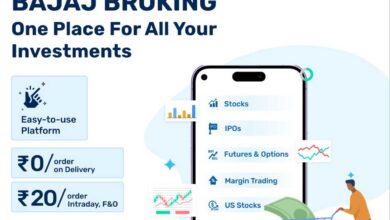
Pricing intelligence plays a pivotal role in shaping an effective e-commerce pricing strategy. Businesses can gain insights into optimal pricing points for their products or services by analyzing competitor prices, customer demand, and market conditions. This intelligence helps retailers identify opportunities for price adjustments that can increase profitability without sacrificing competitiveness.
Price Monitoring involves continuously tracking and analyzing competitors’ prices across various platforms and channels. By leveraging advanced technologies and software tools specifically designed for price tracking, online retailers can automate this process to gather real-time data efficiently. This approach saves time and ensures accuracy in capturing competitive pricing information. With these insights, businesses can adjust their prices strategically, ensuring they remain appealing to customers while maximizing profit margins.
Real-Time Price Tracking
Maintaining a competitive edge in today’s fast-paced market requires businesses to be agile and responsive to ever-changing pricing dynamics. Real-time price tracking has emerged as a crucial tool for companies aiming to stay ahead. Businesses can make informed decisions that align with current market conditions by leveraging live price updates.
Real-time tracking enables dynamic market adjustments by providing instant insights into competitor pricing strategies. This allows companies to react swiftly by adjusting prices or enhancing their value propositions to maintain competitiveness. With sophisticated price comparison tools, businesses can continuously monitor and analyze pricing trends across various platforms.
These tools help identify opportunities for competitive pricing and avoid pitfalls such as underpricing or overpricing of products and services. As a result, real-time price tracking empowers businesses to optimize their pricing strategies effectively, ensuring they remain appealing to consumers while safeguarding profit margins.
Role of Dynamic Pricing
Dynamic pricing has emerged as a powerful tool for businesses looking to maximize profits and drive sales. By employing dynamic pricing strategies, companies can adjust prices dynamically based on various factors, including real-time demand analysis, competitor pricing, and market trends. This approach allows businesses to respond swiftly to changes in the market environment, ensuring they remain competitive while optimizing revenue.
Real-time demand analysis plays a critical role in this process. By continuously monitoring consumer behavior and purchasing patterns, businesses can gain valuable insights into when and how much customers are willing to pay for their products or services. This data-driven approach enables companies to set prices that reflect current demand levels, enhancing sales opportunities during peak periods and avoiding potential losses during slower times.
Revenue optimization through dynamic pricing is not just about increasing prices during high-demand periods; it also involves strategically lowering prices to attract customers or clear out inventory. By offering the right price at the right time, businesses can improve customer satisfaction and loyalty while maximizing profitability.
Price Elasticity Analysis
Price elasticity of demand is a crucial concept in understanding how consumers respond to changes in price. It measures the sensitivity of the quantity demanded of a product to a change in its price. This analysis plays an integral role in consumer behavior analysis, as it helps businesses predict how price adjustments can affect sales volume.
When conducting a price elasticity analysis, businesses can determine whether their products are elastic or inelastic. Elastic products experience significant changes in demand when prices fluctuate, while inelastic products see little change. Understanding this relationship allows companies to make informed pricing decisions that align with consumer expectations and market dynamics.
By analyzing the impact of price changes on sales volume, businesses can better anticipate shifts in consumer purchasing patterns and adjust their strategies accordingly. Demand forecasting becomes more accurate with insights from price elasticity studies, enabling companies to optimize inventory levels and enhance revenue management.
Conducting Competitor Analysis
Conducting a thorough competitor analysis is crucial in making informed strategic pricing decisions. By understanding how your competitors price their products or services, you can better position your offerings in the market. Competitor analysis tools are invaluable for gathering detailed insights into your rivals’ pricing strategies. These tools allow you to compare competitor pricing strategies effectively, enabling you to identify patterns, trends, and potential opportunities or threats.
Benchmarking against competitors’ prices involves evaluating your prices relative to others in the industry. This process helps ensure your pricing is competitive while aligning with your overall business goals and value proposition. Businesses can strategically adjust their pricing models by leveraging data from competitor analysis tools to attract customers and maximize profitability.
Benefits of Customer Segmentation
Customer segmentation is a powerful technique that allows businesses to tailor their pricing strategies to meet different consumer groups’ specific needs and preferences. By dividing a broad customer base into distinct segments based on various characteristics such as demographics, purchasing behavior, or psychographics, companies can develop targeted pricing offers that resonate more effectively with each group.
One of the primary benefits of customer segmentation in personalized pricing strategies is enhancing customer satisfaction and loyalty. When customers feel that prices are set based on their unique needs and values, they are more likely to perceive the brand positively and remain loyal. This approach not only helps in retaining existing customers but also attracts new ones who appreciate personalized experiences.
Targeted pricing offers based on segmentation can significantly improve a company’s competitive edge. This level of precision ensures that companies maximize revenue while maintaining market relevance.
Leveraging customer segmentation techniques allows for more efficient resource allocation. Businesses can focus their marketing efforts and resources on high-yield segments rather than adopting a one-size-fits-all strategy. This targeted approach leads to better conversion rates and higher return on investment (ROI) from marketing campaigns.
Value-based Pricing and Bundling Techniques
Value-based pricing models are a strategic approach that focuses on setting prices primarily based on the perceived value to the customer rather than solely on cost or market prices. This method requires a deep understanding of what customers value most about a product or service, allowing businesses to align their pricing strategies accordingly. Companies can better capture the willingness to pay and differentiate themselves in competitive markets by focusing on customer perceptions.
Bundling products effectively is another powerful technique that complements value-based pricing. By grouping related products or services at a combined price, businesses can enhance the perceived value for customers. This approach encourages purchases by offering more for less and simplifies decision-making for consumers who may otherwise be overwhelmed by too many choices.
Strategic package deals are crucial in value-based pricing and bundling strategies. These deals are crafted by understanding customer needs and preferences, ensuring the bundled offerings provide genuine benefits and convenience. When executed well, strategic packages can increase sales volume, improve customer satisfaction, and foster brand loyalty.
Mastering the art of value-based pricing and bundling techniques is essential for businesses looking to enhance customer-perceived value and achieve long-term success in today’s competitive marketplace.







